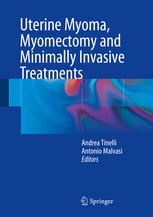

Most ebook files are in PDF format, so you can easily read them using various software such as Foxit Reader or directly on the Google Chrome browser.
Some ebook files are released by publishers in other formats such as .awz, .mobi, .epub, .fb2, etc. You may need to install specific software to read these formats on mobile/PC, such as Calibre.
Please read the tutorial at this link: https://ebookbell.com/faq
We offer FREE conversion to the popular formats you request; however, this may take some time. Therefore, right after payment, please email us, and we will try to provide the service as quickly as possible.
For some exceptional file formats or broken links (if any), please refrain from opening any disputes. Instead, email us first, and we will try to assist within a maximum of 6 hours.
EbookBell Team

5.0
78 reviewsUterine myomas are the most common benign tumors in women, affecting the half of women and mostly in reproductive age. Myomas cause significant morbidity and are the single most common indication for hysterectomy around the world. Thus, myomas represent a major personal and public health concern worldwide. The diagnosis of fibroids can be established based on ultrasound and radiological imaging. Recent research on the genomics and molecular biology of myomas has enabled us to better understand the pathogenesis and pathophysiology of this benign tumor, but more remains to be discovered. In the clinical parterre, novel methods of conservative treatments have been developed to allow many women to keep their reproductive capacity and to save uterus, and more novel treatments are available on the horizon. For this topic, an outstanding group of worldwide experts have come together to provide a detailed discussion of basic research and clinical aspects of myomas. All the existing knowledge will be summarized in this book that can serve as a starting point for clinicians, young doctors, students, fellows and all researchers who want to read up on this disease. This book is devoted to myomas, covering both recent advances in our understanding of their behaviour, and an overview of the current options for their minimally invasive treatments, with endoscopy and new devices. As we learn more about the molecular, genetic and biology of myomas, we will be able to develop more innovative treatments.